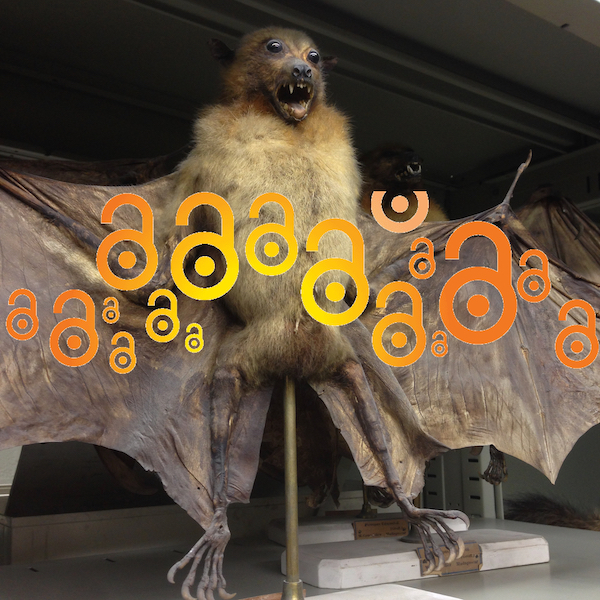This year GBIF-Norway received a total of 12 applications from 6 different institutions for project support of in total 1 373 500 NOK. The annual budget for these grants is 500 000 NOK. The GBIF-Norway board decided in the March 21st board meeting to increase the budget allocation to 700 000 NOK, and finally during the April 8th board meeting decided to approve 6 project applications with a total co-funding from GBIF-Norway at 775 000 NOK.
All project applications were assessed and ranked by external project evaluators from GBIF-Sweden, and by the GBIF-Norway board members to ensure an absence of conflict of interests (five of the project applications were from the UiO Natural History Museum which is also the primary host of the Norwegian GBIF-Node). The following 6 projects were approved co-funding of a total of 775 500 NOK (in alphabetical order).
NMBU Faculty of Environmental Sciences and Natural Resource Management (MINA)
Species occurrence data for birds, mammals, fishes, insects, vascular plants, lichens, mosses and more (mostly from locations in Norway). The estimated number of data records to be mobilized for this call was 40 000 occurrences of beetles interacting with old and young oak trees by Anne Sverdrup-Thygeson and Tone Birkemoe; 1500 occurrences of birds by Katrine Eldegard; 1000 occurrences of fish by Thrond Haugen; 10 000 occurrences of springtail and Oribatide mites from Sandalsnuten at Finse by Ruben Roos and Tone Birkemoe; 2000 + approx 2000 occurrences of insects interacting with reindeer carcasses on Hardangervidda by Heidi Granum and Tone Birkemoe; more than 50 000 occurrences of beetles from ancient woodland (naturskog@no) in southern Norway by Anne Sverdrup-Thygeson and Tone Birkemoe; and 5000 occurrences of moss campion (Silene acaulis) across Scandinavia by Erik Aschehoug. And in addition an estimated 15 000 occurrences of beetles in Østmarka in Oslo and Ramstadslottet nature reserve in southeastern Norway by Lisa Lunde, Anne Sverdrup-Thygeson and Tone Birkemoe; 5000 springtail and Oribatide mites from an elevation gradient of 500 meters at Finse. NMBU MINA will in addition also include GBIF data publication in the teaching curriculum for a field course at Darbu. This project includes an impressive estimated total of approximately 130 000 new species occurrence data to be published during the autumn of 2019 with a co-funding of 150 000 NOK from GBIF-Norway. NMBU MINA received a similar co-finding grant of 100 000 NOK in 2015 and another 100 000 NOK in 2017 and published a total of more than 135 000 species occurrence presence data point (as well as many absence points) included in 31 datasets (19 + 13).
NTNU University Museum in Trondheim (NTNU-VM)
The NTNU University Museum will publish results from eDNA surveys of freshwater organisms which is a prioritized completely new data type in GBIF. This project will coordinate activities with the DNAqua-net EU COST action to publish species data records linked to the operational taxonomic units (OTUs) recently included to the GBIF Taxon backbone. Data for this pilot dataset will include eDNA or bulk-samples for invertebrates in still water or in streams of freshwater in Central Norway (Midt-Norge). Samples will originate from an estimated set of 10 localities representing 1100-1200 species names and include an estimated 10 000 species occurrences with a co-funding of 150 000 NOK from GBIF-Norway. Project participants at NTNU University Museum are Anders G. Finstad (GBIF Science Committee vice-chair), Torbjørn Ekrem, and Markus Majaneva.
UiB University Museum in Bergen (UiB-UM)
The UiB University Museum will prepare and publish specimen data for Diptera (flies) for Norwegian localities. An estimated 1230 new specimens will be added and new georeferences added for an estimated 6970 previously published specimen data points from the entomology collection in Bergen (total of 8200 new or updated data points) with co-funding of 100 500 NOK from GBIF-Norway. Project participants include Steffen Roth, Per Djursvoll, and Bjarte Jordal. Taxonomic assistance will be provided by Terje Jonassen, Gunnar Kvifte, Trond Andersen, Lita Greve, Wolfgang Adaschkiewitz.
UiO Natural History Museum in Oslo (UiO-NHM)
A total of three different projects from the Natural History Museum in Oslo was co-funded in this 2019 call.
Museum specimens of Diptera (flies) of the suborder Brachycera from the entomological museum collection in Oslo will be georeferenced and registered electronically into the museum database and published in GBIF. All specimens will get persistent identifiers based on UUIDs that will resolve from the resolver provided by GBIF-Norway. An estimated 6500 new specimens will be added and another estimated additional 9200 specimens will be georeferenced with co-funding of 150 000 NOK from GBIF-Norway. Project participants include Geir Søli, Dawn Williams, and Lars Ove Hansen.
Museum specimens of pollinators from the Apoidea superfamily within the Hymenoptera order (wasps, bees) will be georeferenced and registered electronically into the museum database and published in GBIF. All specimens will get persistent identifiers based on UUIDs that will resolve from the resolver provided by GBIF-Norway. An estimated 6500 new specimens will be added and another estimated additional 8200 specimens will be georeferenced with co-funding of 150 000 NOK from GBIF-Norway. Project participants include Lars Ove Hansen together with a technician to be employed for this project.
Radiolaria data from a total of 133 sampling events from 1969 to 1971 in Korsfjorden close to Bergen will be prepared for publication in GBIF. The dataset includes an estimated 66 species and 8778 occurrence data points (estimate including both presence and absence data). Korsfjorden is approximately 670 meters deep and samples are collected at each 100-meter depth. The project will also include adding species illustration images and updating the radiolaria checklist dataset in GBIF. Co-funding from GBIF-Norway is 75 000 NOK. Two previous co-funded projects on Radiolaria data at NHMO has been co-funded by GBIF-Norway in 2015 and 2017.










